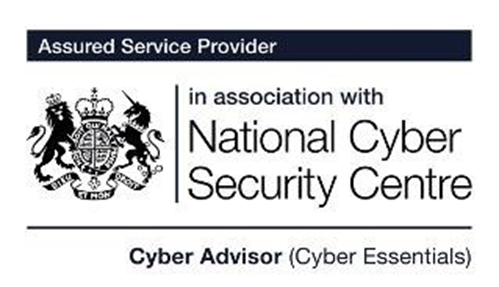Businesses today are more dependent on data and cutting-edge technology than ever before, and this trend is only expected to accelerate. Hardware and software alike, businesses also need to make use of IT to boost productivity, increase data for analytics, and give employees a greater say in company decisions. Businesses need a cyber security compliance plan to meet expectations.
Cyber security compliance has become more difficult for businesses as a result of new industry standards and laws relating to data and cybersecurity. The question, therefore, becomes how to guarantee that your organisation’s cyber security compliance plan and infrastructure can withstand external (and occasionally internal) assaults.
Compliance with cybersecurity standards is crucial to the growth and prosperity of any business. When it comes to defending your business from cyber threats like DDoS, phishing, malware, ransomware, and more, compliance is more than simply a formality for meeting government rules.
Learn all you need to know about cyber security compliance today. We offer information from the basics to the specifics of what you need to know to get started with a compliance programme.
What Is Cybersecurity Compliance?
Cybersecurity is a top priority for any company that handles data (which is pretty much every company) or has an exposed edge to the internet. Organisations are at risk and open to cyberattacks when data is accessed and transferred from one location to another.
Cybersecurity compliance essentially boils down to following the rules and regulations set out by some kind of governing body, whether it is legislation or a collection of authorities. Organisations can only be in the clear when they have implemented risk-based policies to safeguard their data. Information security is essential at every stage of a business’ data lifecycle, including data archiving, processing, integration, and transmission.
Organisations large and small have a great deal of difficulty in achieving cybersecurity compliance due to the fact that there is often an overlap between industry standards and criteria. Cyber consultancy and managed cybersecurity services help businesses stay compliant.
Why Implement Cyber Security Compliance?
Cyber security compliance standards and laws is crucial since no modern organisation can guarantee it will never be the target of a cyberattack. It may be crucial to a company’s prosperity, efficient running, and safe procedures.
Low-hanging fruit often consists of small and medium-sized enterprises (SMBs). Because of the devastating effects a breach might have on national security, the economy, public health and safety, and other areas, the National Cyber Security Centre (NCSC) in the UK and Cybersecurity and Infrastructure Security Agency (CISA) in the United States have prioritised protecting several critical infrastructure sectors (CIS).
When small and medium-sized businesses don’t put cybersecurity and compliance first, hackers have an easier time finding and exploiting their weaknesses and launching expensive and harmful assaults. Only 40% of small and medium-sized businesses adopted cybersecurity policies in response to the remote work shift brought on by the current COVID-19 pandemic, said a poll conducted by the 2020 Cyber Readiness Institute (CRI).
Complex issues might arise as a result of a data breach, which can be detrimental to a company’s credibility and bottom line. The occurrence of legal procedures and conflicts after a violation is on the rise across all sectors. Because of this, compliance is an essential part of any cyber security strategy.
Types of Data Subjected to Cybersecurity Compliance
There are three types of sensitive data that are the focus of most cybersecurity and data protection legislation: personally identifiable information (PII), financial information, and protected health information.
Personally Identifiable Information (PII)
- Date of birth
- First/last names
- Address
- Social security number (SSN)
- Mother’s maiden name
Financial Information
- Credit card numbers, expiration dates and card verification values (CVV)
- Bank account information
- Debit or credit card personal identification numbers (PINs)
- Credit history or credit ratings
Protected Health Information
- Medical history
- Insurance records
- Appointment history
- Prescription records
- Hospital admission records
Other types of sensitive information may also fall under these compliance requirements and laws:
- Race
- Religion
- Marital status
- IP addresses
- Email addresses, usernames and passwords
- Biometric data (fingerprints, facial recognition and voice prints)
Benefits of Cybersecurity Compliance
There are several reasons why businesses may benefit from enforcing strict cybersecurity compliance standards:
- Guards their reputation
- Keeps the faith of one’s clients or customers intact
- Enhances trust and loyalty within the target audience
- Aids in the detection, analysis, and prevention of data breaches
- Helps a company become more secure
A company’s bottom line may be directly influenced by several of these advantages. Everyone knows that building and keeping trusting relationships with customers is essential to any business’s long-term success.
In addition to these advantages, a company’s security posture and intellectual property (IP) like trade secrets, product specifications, and software code can be safeguarded by adhering to cybersecurity compliance standards. All of this knowledge may offer a company a leg up in the marketplace.
How to Start a Cybersecurity Compliance Plan
If you are still reading, you are probably curious about how to start a cybersecurity compliance programme within your company. There is no silver bullet, thus it might be a challenging undertaking to do. However, you can get started on creating a compliance programme that will help you get the advantages and fulfil regulatory compliance obligations by following the five stages below. Included in this are the risk management process and rules, as well as the compliance staff responsible for enforcing them.
Create A Team
Building a compliance team to evaluate and keep tabs on cybersecurity is a good idea for any company, no matter how big or small. When it comes to protecting sensitive data, keep in mind that cybersecurity won’t (and can’t) exist in a vacuum, particularly as more and more businesses migrate their most essential functions to the cloud. That’s why it’s important to create an interdepartmental workflow and make it known to the relevant business and IT staff.
Enable Risk Analysis
Incorporating a risk-based approach to cybersecurity, as is possible with risk analysis, will help your company achieve greater compliance. Methods of risk assessment include:
- Accurately catalogue all information assets, including the resources (data, systems, and networks) to which they provide access.
- Determine the storage, transmission, and collection locations of sensitive data in order to assign a risk rating to each data type. Then, assign each of those spots a risk score.
- Follow this formula to do a risk analysis: The formula for calculating risk is as follows: Risk = (Probability of Breach x Impact) / Cost
- Determine the level of risk you are willing to take by deciding whether to shift, reject, accept, or reduce it.
Choose A Framework
Choosing a framework comes from understanding your risk profile. As such, consider the following:
- Scope of coverage (breath)
- Amount of details (depth)
- Taxonomy (overall arrangement of requirements & formatting)
- Industry-specific terminology
A framework is useful as a standard; however, the framework you choose should be tailored to your company’s specific needs, culture, and compliance and security objectives.
Set Your Controls
Controls for maintaining risk analysis and ensuring cybersecurity compliance must be established at the same time as the analysis itself. You must now choose a strategy for reducing or shifting risk based on your personal comfort level with uncertainty.
Some of the options for your controls are:
- Firewalls
- Encryption
- Password policies
- Vendor risk management program
- Employee training
- Insurance
Set Up Policies
When you set up policies, you’re ensuring that the policies that you implement will comply with cybersecurity procedures and protocols. Your policies document your compliance activities and controls, thus serving as the foundation for any internal or external audits that are necessary.
Update Policies And Procedures
The compliance team at your company may make fine-tuned adjustments to existing rules and processes, or come up with brand-new ones, based on the results of your risk assessment plan. That’s great news since many authorities need companies to demonstrate how their compliance rules and processes integrate with their existing cybersecurity tools.
Monitor And Respond Nonstop
To keep up with the ever-changing evolution of cyber risks, regulatory frameworks must be flexible. Data pirates in the cyber realm are continuously on the lookout for new opportunities to exploit known flaws in security protocols in order to steal sensitive information. Consider the creation of a new type of ransomware that combines two existing strains as an example.
Companies and other entities must anticipate and counteract cyber attacks. Consequently, businesses need to go beyond merely continuous monitoring, which can only identify brand-new dangers. Instead, your compliance department should act in response to these risks before they become data breaches.
Advantages Of Cybersecurity Compliance
As data breaches grow more regular and dangerous, especially among small and medium enterprises, protecting customers’ security and privacy has risen to the top of the agenda for many organisations, the IT teams that support them, and the cyber consultancy firms they employ.
In the context of information security, compliance guarantees that all operations are handled and maintained in a way that protects the security of the organisation and the privacy of its users’ data.
Six benefits of cyber security compliance are listed below, in addition to the obvious one of avoiding expensive data breaches due to noncompliance with industry standards.
- Avoiding costly fines and penalties is a major benefit of cybersecurity compliance programmes.
- Maintaining cybersecurity compliance protects a company’s reputation by preventing harmful data processing practices.
- Supporting customers’ rights to access, delete, or amend their data increases businesses’ data protection activities via cybersecurity compliance.
- By showing that they have made reasonable efforts to protect their customers’ personal information, businesses gain their customers’ confidence.
- Implementing security controls and data processing good practices that meet or exceed current laws or regulations and exhibiting industry leadership in information security are two ways in which cybersecurity compliance improves the culture of an organisation.
- By requiring organisations to implement suitable technological and organisational controls and demonstrate their efficacy upon request from people or authorities, cybersecurity compliance fosters openness and accountability.
General Cyber Security Compliance Tips
The National Cyber Security Centre (NCSC) has published key guidelines for remaining safe online in light of the increased cybersecurity threats posed to organisations of all sizes due to remote working and other circumstances induced by the pandemic.
- The most important information and systems should have frequent backups. It is important to store backups in a safe location and regularly test their functionality.
- Make sure your computer, phone, and other devices are as safe as possible by installing all available updates, including security patches. You may often choose between having the programme automatically update or manually downloading the latest fixes.
- Be sure you have antivirus and anti-malware software installed on all of your devices and that it is kept up to date.
- Keep your passwords secure and update them often. For even more protection, you might think about using two-factor authentication.
- Keep your online accounts secure by using unique passwords for each one, or look into a password manager.
- Passwords and other private information should never be sent in an unencrypted email, therefore be sure to use encryption for any such correspondence.
- Be wary of clicking on links in emails, social networking applications, or random websites to avoid phishing or ransomware.
- Make sure your internet router/firewall is running the most recent firmware and that you’re using a firewall.
- If you’re in charge of a wireless network, you should use strong encryption (WPA2) and switch the password often.
- If you need to connect to your systems while using public Wi-Fi or another unsecured network, a virtual private network (VPN) is your best bet.
Create An Up-To-Date Cyber Security Compliance Plan
Your company needs up-to-date managed cyber security services and technologies to ensure it stays compliant as the industry evolves. Since this is the desired strategy for businesses in many different sectors, why not get in on the action and implement a compliance plan today to improve cybersecurity on your end and protect against cyberattacks that you couldn’t have possibly predicted? Optimising IT provides top-notch managed cybersecurity services and cyber consultancy options for your business. See what more we can do for you now by checking out these services.












